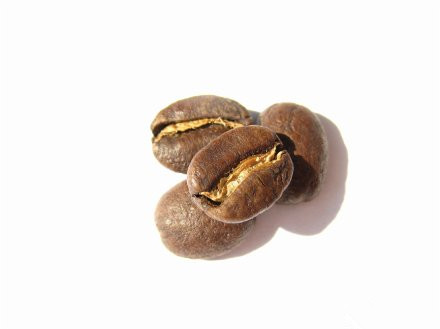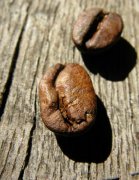The processing process of coffee beans before grinding explains in detail the treatment of coffee fruits

First, peeling: the peel and most of the pulp are removed mechanically.
Second, fermentation
Third, drying
Fourth, roasting: through roasting, raw coffee beans can release the special aroma of coffee. Each coffee bean contains its fragrance, sour taste, sweetness and bitterness. How to release it incisively and vividly depends on the heat of its baking. From the insipid raw beans to the endless aftertaste in the cup, roasting is a very important step in the long journey of each coffee bean. Coffee beans are about 10 or 20 minutes long (inversely proportional to the temperature) and the temperature is as high as more than 200 degrees Celsius. In the process of dialogue with the hot dish, coffee beans undergo many chemical changes, giving off a first explosion, a second explosion, a sound like popcorn, and loss of moisture. From raw beans, light and medium roasting to deep roasting, moisture is released again and again, the weight is reduced, but the volume expands and bulges, the color of coffee beans deepens, the fragrant oil is gradually released, and the texture becomes crisp. In raw beans, there is a lot of chloric acid, which gradually disappears with the baking process, releasing familiar and pleasant fruit acids such as acetic acid, citric acid and malic acid in wine. Baking is just right to present these beautiful sour flavors.
Light baking-when the beans make the first light sound, the volume expands at the same time, and the color changes to a delicious cinnamon color. Acidity dominates the flavor of shallow roasted beans, texture and taste have not been brought into full play, generally used as canned coffee.
Medium roasted-coffee beans show an elegant brown color. This method of baking is also called city roast. Medium roasting can not only preserve the original flavor of coffee beans, but also moderately release aroma, so the blue mountains of Jamaica, Colombia, Brazil and other individual coffee, more choose this roasting method. At 20 minutes, the oil begins to surface, and the beans are burned into an oily dark brown, called full-city roast, when the sour, sweet and bitter taste of coffee reaches the perfect balance, and the character of coffee beans is clearly depicted.
Deep roasting-the darker the color of the coffee beans, the sweeter the flavor, when the oil has turned into caramel, bitter back to sweet, endless aftertaste, the most suitable for the strong Italian Espresso, so it is also called Italian baking. Moderate roasting gives life to the coffee beans and turns them into intriguing sweetness and bitterness. People who are sensitive to caffeine might as well choose deep-roasted beans, because in the process of deep-roasting, caffeine will slowly escape, so the deeper the roasted beans, the lower the caffeine content, the caffeine content in a cup of Espresso is only half that of other medium-roasted coffee, the general Espresso coffee has less capacity, and the caffeine content is much higher if it is equal to the capacity of ordinary coffee.
It should be noted that the roasting of coffee beans is divided into primary roasting and secondary roasting. The difference depends on the size of the coffee shop. Due to resource constraints, small coffee shops have only one machine, which requires the entire roasting process to be completed at once, while for larger coffee shops, there will be at least two machines that can work together to complete the baking process in two stages. After the second roasting, the acidity of the coffee beans is greatly reduced, the aroma is clear, and the taste is sweet and refreshing.
Important Notice :
前街咖啡 FrontStreet Coffee has moved to new addredd:
FrontStreet Coffee Address: 315,Donghua East Road,GuangZhou
Tel:020 38364473
- Prev

The process of coffee picking introduces the basic knowledge of coffee.
Coffee trees usually blossom in 3-4 years, about 2-3 months a year, and their appearance and smell are similar to those of jasmine. when they bloom, they grow in clusters on the branches and bloom for 3-5 days. After the flowers bloom, they bear small green fruits, which ripen and turn red into ripe fruits that can be picked after a few months. The skin of ripe fruit is red. Because its shape and color are similar to cherries, ripe coffee fruit is called coffee cherry in many places.
- Next

General knowledge of Fine Coffee explain the way to get beans from Coffee
The beans are sweeter when the coffee is picked after it is red and ripe. If coffee farmers in order to save trouble, no matter whether the coffee fruit is ripe or not, picking it together will make the coffee sour and astringent, so the fine coffee must choose the ripe red fruit. Distinguish between floating beans and sunken beans: coffee fruits picked from coffee fields should not be mistaken and must be sent to the processing plant on the same day. Immature
Related
- Beginners will see the "Coffee pull flower" guide!
- What is the difference between ice blog purified milk and ordinary milk coffee?
- Why is the Philippines the largest producer of crops in Liberia?
- For coffee extraction, should the fine powder be retained?
- How does extracted espresso fill pressed powder? How much strength does it take to press the powder?
- How to make jasmine cold extract coffee? Is the jasmine + latte good?
- Will this little toy really make the coffee taste better? How does Lily Drip affect coffee extraction?
- Will the action of slapping the filter cup also affect coffee extraction?
- What's the difference between powder-to-water ratio and powder-to-liquid ratio?
- What is the Ethiopian local species? What does it have to do with Heirloom native species?

